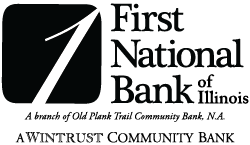Fraud 101: Checks and Wire Transfer Fraud
Fraud 101: Checks and Wire Transfer Fraud
This is the fourth article in four-part series on business fraud.
Part 1: How To Prepare Your Business Against Email Attacks
Part 2: How to Prepare Your Business against Malware and Ransomware
Part 3: How to Prepare Your Business against Mobile Scams
When criminals commit fraud, the quicker they gain control of the funds, the better. Wire fraud, in particular, can be highly lucrative as it allows sophisticated criminals to move money quickly and engage in multiple fraudulent transactions per day with relatively minimal effort. Once stolen funds are moved quickly and beyond the confines of the U.S. banking system and law enforcement, it is almost impossible to recover them.
Notwithstanding the proliferation of digital payment methods, businesses continue to use paper checks. While the Federal Reserve Board reports an uninterrupted decline in the annual volume of checks, billions of dollars of check payments clear every day. Check fraud is a relatively simple form of bank fraud, but the losses can be just as damaging as those generated from wire fraud.
While wire fraud and check fraud generate billions in losses, not to mention the time, effort, and expense business owners incur to recover from fraud, both forms of fraud can be detected and prevented.
Making it difficult for criminals to succeed
Here's some guidance on strengthening your company's fraud defenses to mitigate the risk of wire or check fraud.
- Talk to your bank about fraud prevention. Most banks offer a suite of fraud tools for their business customers. Those solutions may be complimentary or require a small fee. Your bank may offer positive pay or reverse positive pay solutions to compare checks presented for payment, review exception item check activity, and return fraudulent checks. And ask your financial institution if they provide banking alerts, delivered via email or text, to notify you of account activity, such as outgoing wire status changes or updates to your wire transfer templates. Placing dual controls on wire-related transactions, such as new wire transactions or the creation and editing of wire templates, also adds another critical layer of preventative controls.
- Respond to calls from your bank quickly. While trained investigators can often spot fraud and take action without talking to you, in some cases, they may need to call to verify a transaction. Provide your bank with multiple points of contact within your business so they can ask questions about transactions and make decisions quickly. And ensure those individuals tasked with answering your bank's calls know how to verify the caller as legitimate.
- Protect your network and devices. Activate a firewall to help block cybercriminals' efforts to breach your network, and install antivirus and antimalware software on every device. Every employee should be required to use complex passwords and prohibited from using the same credentials more than once. For additional security, consider using multifactor authentication, which requires more than a username and password to grant access to a solution.
- Educate employees on how to prevent fraud. Every employee can play a role in protecting your organization against fraud. This includes scrutinizing emails before they open them, not disclosing sensitive information to third parties, and quickly notifying your company of suspicious activity or transactions. "If something feels suspicious, it probably is," says Lauren Hess, vice president of treasury sales at Wintrust. "It’s better to take the time to ensure an email is legit than to jump on a request too quickly and find out you’ve compromised sensitive company information."
- Reconcile your bank account activity every day. Detecting fraud quickly requires paying close attention to the transactions posted to your account. Reconcile your bank activity on a daily basis, and contact your bank immediately if you uncover suspicious activity. Keep in mind that the longer it takes to reconcile your attack activity, the more likely it is for a fraudulent transaction to go undetected.
- Secure your paper checks. If your company uses paper checks, limit access to those involved in the payment process. Furthermore, when ordering new checks, ensure two people authorize the order. To prevent employees from conspiring to commit fraud, the second person authorizing the purchase should not be involved in the issuance of checks.
Maintaining a focus on fraud prevention
Whether criminals commit wire or check fraud, their goal is to steal your company's funds. Avoiding becoming a victim of fraud requires an unwavering commitment to protecting your organization. Remember that a criminal must succeed only once to be successful. On the other hand, your business must always remain focused on fraud prevention.
Nonetheless, your bank can play a critical role in protecting your accounts against wire fraud and check fraud, as well as any other form of fraud, such as ACH, credit, debit, or deposit fraud. The more checks and balances you put in place, the more difficult it is for criminals to infiltrate your business.
For more information on scams targeting your business, and measures you can take to protect it, visit our security page.





